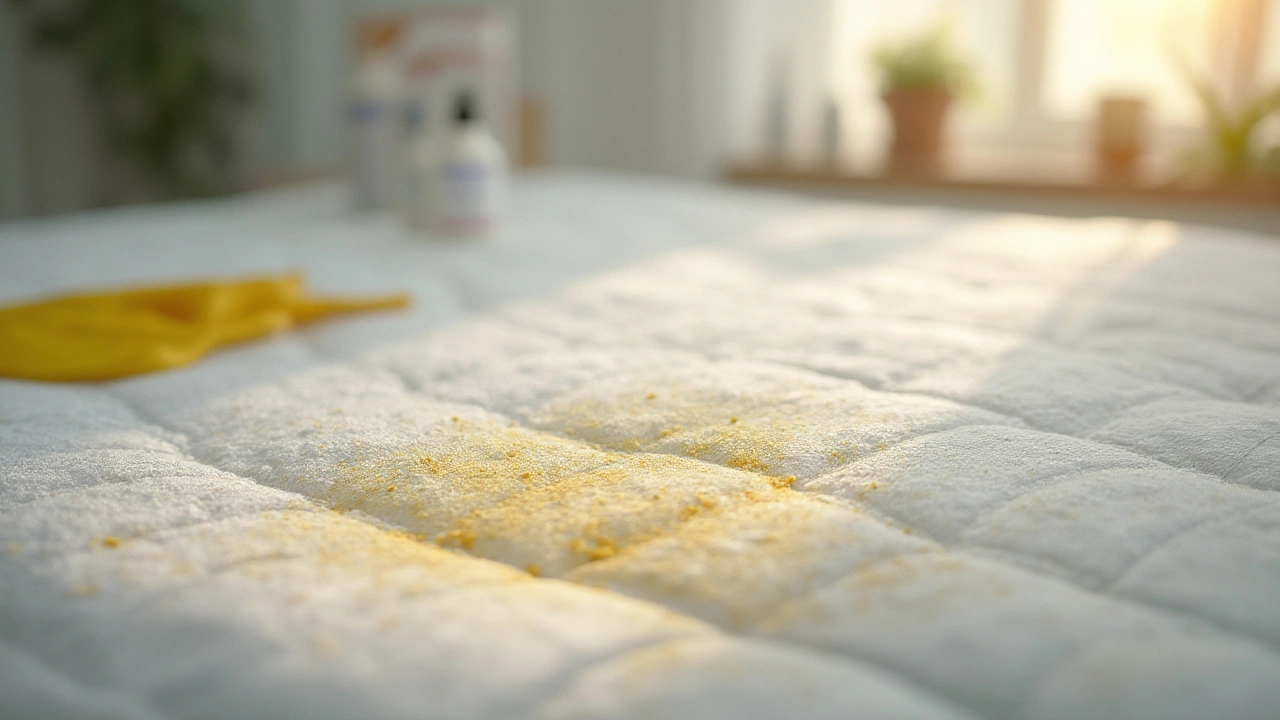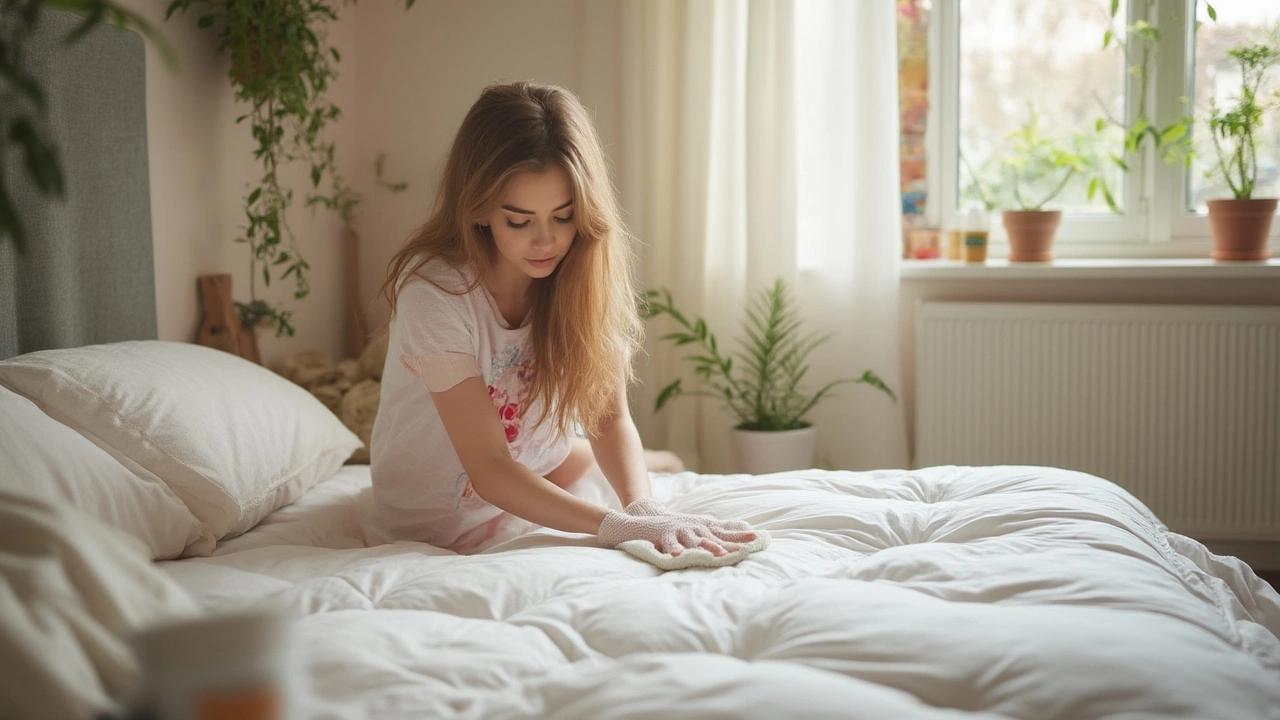Anyone who’s ever dealt with a pee accident on a mattress knows that sinking feeling — it’s never just about an embarrassing smell; it’s about a stubborn stain that somehow soaks deep and won’t let go, even days later. The thing is, a mattress is not like a t-shirt or a towel. It’s thick, full of foam or springs, and a real sponge for any liquid unlucky enough to land on it. So, what actually draws pee out of a mattress? There’s a bit of science, some time-honoured tricks, and a load of patience involved.
The Science of Pee & Mattresses: Why It’s So Hard to Get Out
If you’ve ever wondered why a little accident can cause such a major headache, here’s the truth: mattresses are basically absorbent giants. The average mattress is made of layers—fabric, foam, springs—which means when liquid hits, capillary action pulls pee far inside, past what you can see or even touch. Human urine is mainly water, but it also contains urea, uric acid and other compounds. These break down, causing that unpleasant ammonia-like odour that lingers. The real kicker? Once they dry, some of these compounds crystallise. So even if you think you’ve blotted it all away, there’s a sneaky residue tough enough to puzzle even professional cleaners.
Here’s a striking fact: According to a study in the Journal of Environmental Health, a mattress can harbour bacteria from urine for over a month if not properly cleaned. Not pretty, right? When dried, old urine even acts as a magnet for dust mites and their allergens, making your bed less healthy by the day.
What Actually Draws Pee Out? Breaking Down What Works (and What Doesn’t)
Let’s get something straight—water alone cannot draw pee out of a mattress. In fact, adding more water just ends up spreading it deeper. You need a combination of absorbency and neutralising chemistry. Here’s what comes to the rescue:
- Baking Soda – This isn’t just for cakes. It’s a powerhouse absorbent and mild deodoriser. When sprinkled generously over a pee spot, it pulls moisture towards itself as it dries, capturing some of the smelly compounds.
- White Vinegar – The acid in vinegar breaks down uric acid crystals, neutralises the ammonia smell, and helps lift out embedded odours.
- Enzyme Cleaners – These are the heroes for pet urine but work perfectly on human accidents too. The special proteins in these cleaners eat away at the uric acid, breaking it into odourless, harmless substances. Not all cleaners are created equal, but pet shops or online platforms will sell trusted brands.
- Paper Towels & Microfibre Cloths – Not exactly a miracle, but the right technique matters. Pressing (not rubbing) draws out liquid fast, helping keep the stain small.
The tools may sound simple, but there’s real chemistry happening here. When baking soda meets liquid, it draws out and traps moisture through an endothermic reaction. Vinegar reacts with urine residues, dissolving some of their chemical bonds. But the best is still enzyme cleaner, as it tackles the root problem, not just the symptom.

DIY Step-By-Step: How to Get Pee Out of a Mattress (And What to Avoid)
If you’re panicking, take a breath. Here’s a process that covers all bases, using both chemistry and common sense. Repeat as needed until everything—smell, stain, and stress—is gone.
- Act Fast: The sooner you blot, the more you’ll pull out before it seeps deeper. Use a stack of paper towels or a clean dry cloth, press down hard (don’t scrub!), and swap as they soak up liquid.
- Mix a Solution: Combine equal parts white vinegar and cold water in a spray bottle. Spray enough to dampen but not drench the area. Vinegar starts breaking down the uric acid on contact.
- Blot Again: More pressing, more swapping towels. Get as much liquid up as you can.
- Apply Baking Soda: Cover the damp spot with enough baking soda to form a small mound. Leave for at least eight hours—or overnight. Baking soda will draw out stubborn moisture as it dries.
- Vacuum Thoroughly: Use an upholstery or mattress attachment to lift the now-dry baking soda, carrying odours and moisture with it.
- Enzyme Cleaner Time: If any stain or odour remains, spray on a generous amount of enzyme cleaner. Let it sit according to bottle instructions, usually at least 15–30 minutes, then blot and repeat baking soda if needed.
Avoid using steaming hot water or a hair dryer—those just set stains and odours deeper. Also, skip harsh chemicals like bleach, which can damage mattress fibres and are not effective on uric acid. If the mattress is memory foam, be extra gentle. It absorbs liquid slowly but holds onto odours even longer.
Mattress Materials: Why the Type Makes a Difference
Mattress materials play a big role in how difficult it is to draw pee out. Memory foam, for example, has tiny pockets that act like a million little sponges, trapping the liquid and making it harder to dry out fully. Traditional spring mattresses, while firmer, still have fibres and batting that can hold onto stains just as well. Natural latex is slightly more resistant but can still trap odours if ignored. Hybrid models offer no magic protection either.
Have a mattress protector yet? If not, now’s a good time. Testing from Good Housekeeping found protectors reduce absorption by up to 99%—so accidents never reach the tricky layers. Here, check out a quick summary of mattress types and pee absorption rates:
| Mattress Type | Pee Absorption Rate* | Odour Retention |
|---|---|---|
| Memory Foam | High | Very High |
| Spring/Innerspring | Moderate | Medium |
| Latex | Low to Moderate | Lower |
| Hybrid | Moderate | Medium to High |
*Based on third-party lab testing by Which? (2024 Edition)
It doesn’t really matter if you paid £200 or £2,000 for your mattress—once urine seeps in, the battle is the same. So, protect, clean quickly, and keep those helpful products to hand.

Simple Prevention Tips to Save Your Sleep (and Your Mattress)
If you’re tired of fighting this battle every few months, here are some realistic, effective prevention tips. Some sound simple, but trust—they really work.
- Use a Mattress Protector: Waterproof, washable ones are inexpensive and almost a magic barrier for accidents. Change or wash every month.
- Set Up Easy Access to Bathroom: For young children, elderly relatives, or anyone recuperating, small changes (like a night light or closer chamber pot) really make a difference reducing in-bed accidents.
- Teach and Remind: Consistent reminders for kids or loved ones to use the loo before bed pay off—those small routines actually cut late-night spills dramatically.
- Regular Deep Cleaning: Every 3–6 months, clean your mattress, even if no visible accidents happen. Allergens and sweat all accumulate over time.
- Circulate Air: Sunshine and fresh air dry mattresses naturally and kill some bacteria. If you can, air out your mattress on a sunny day—it keeps odours under control.
- Avoid Eating & Drinking in Bed: Accidental spills don’t just come from humans—pets and night-time snacks can be just as stubborn to clean.
Little changes add up, making your bed fresher and your cleaning headaches fewer and farther between.
